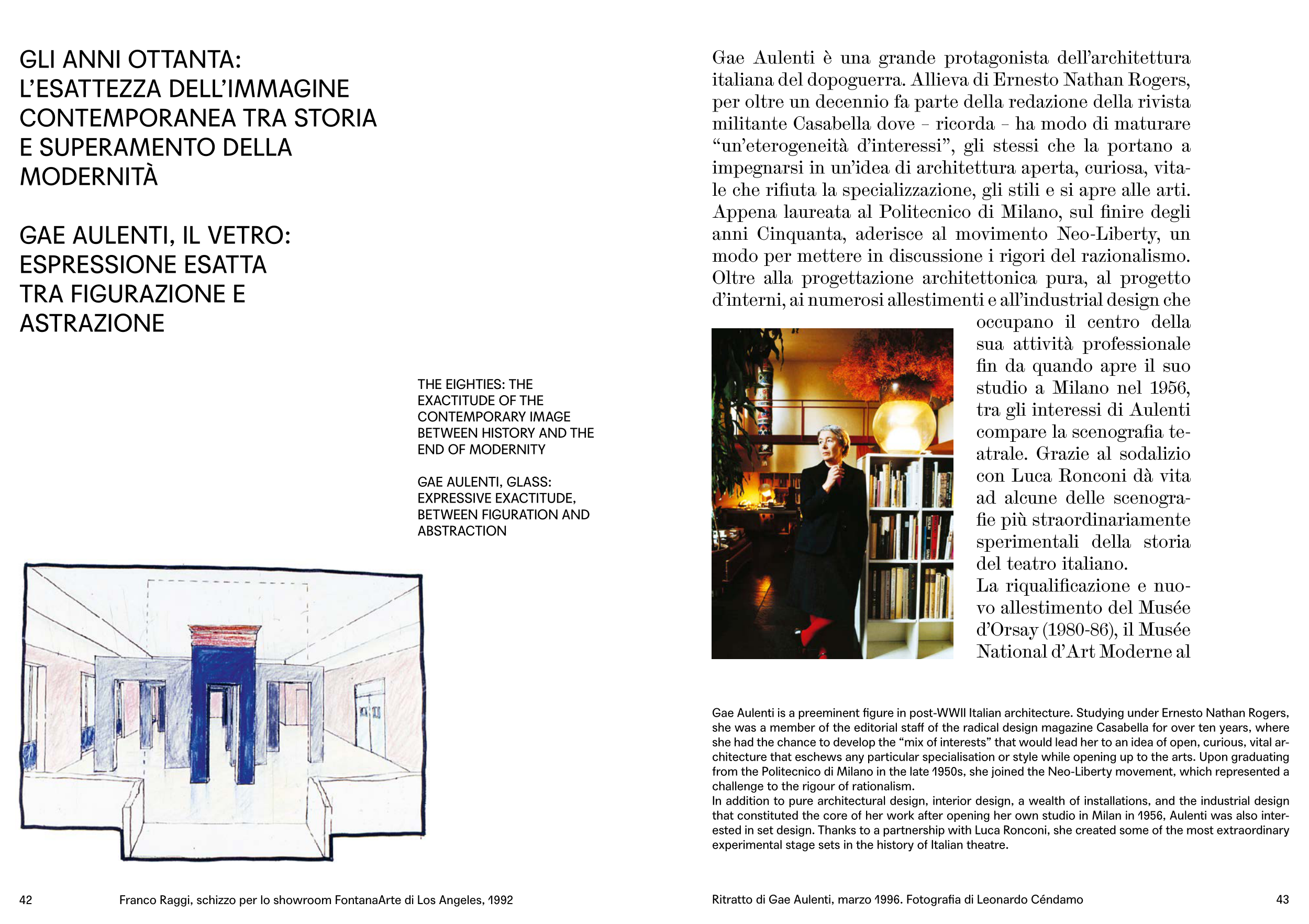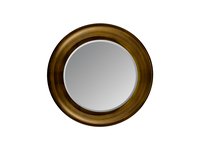42
43
GLI ANNI OTTANTA:
L’ESATTEZZA DELL’IMMAGINE
CONTEMPORANEA TRA STORIA
E SUPERAMENTO DELLA
MODERNITÀ
GAE AULENTI, IL VETRO:
ESPRESSIONE ESATTA
TRA FIGURAZIONE E
ASTRAZIONE
Franco Raggi, schizzo per lo showroom FontanaArte di Los Angeles, 1992
Gae Aulenti è una grande protagonista dell’architettura
italiana del dopoguerra. Allieva di Ernesto Nathan Rogers,
per oltre un decennio fa parte della redazione della rivista
militante Casabella dove – ricorda – ha modo di maturare
“un’eterogeneità d’interessi”, gli stessi che la portano a
impegnarsi in un’idea di architettura aperta, curiosa, vita-
le che rifiuta la specializzazione, gli stili e si apre alle arti.
Appena laureata al Politecnico di Milano, sul finire degli
anni Cinquanta, aderisce al movimento Neo-Liberty, un
modo per mettere in discussione i rigori del razionalismo.
Oltre alla progettazione architettonica pura, al progetto
d’interni, ai numerosi allestimenti e all’industrial design che
occupano il centro della
sua attività professionale
fin da quando apre il suo
studio a Milano nel 1956,
tra gli interessi di Aulenti
compare la scenografia te-
atrale. Grazie al sodalizio
con Luca Ronconi dà vita
ad alcune delle scenogra-
fie più straordinariamente
sperimentali della storia
del teatro italiano.
La riqualificazione e nuo-
vo allestimento del Musée
d’Orsay (1980-86), il Musée
National d’Art Moderne al
Ritratto di Gae Aulenti, marzo 1996. Fotografia di Leonardo Céndamo
Gae Aulenti is a preeminent figure in post-WWII Italian architecture. Studying under Ernesto Nathan Rogers,
she was a member of the editorial staff of the radical design magazine Casabella for over ten years, where
she had the chance to develop the “mix of interests” that would lead her to an idea of open, curious, vital ar-
chitecture that eschews any particular specialisation or style while opening up to the arts. Upon graduating
from the Politecnico di Milano in the late 1950s, she joined the Neo-Liberty movement, which represented a
challenge to the rigour of rationalism.
In addition to pure architectural design, interior design, a wealth of installations, and the industrial design
that constituted the core of her work after opening her own studio in Milan in 1956, Aulenti was also inter-
ested in set design. Thanks to a partnership with Luca Ronconi, she created some of the most extraordinary
experimental stage sets in the history of Italian theatre.
THE EIGHTIES: THE
EXACTITUDE OF THE
CONTEMPORARY IMAGE
BETWEEN HISTORY AND THE
END OF MODERNITY
GAE AULENTI, GLASS:
EXPRESSIVE EXACTITUDE,
BETWEEN FIGURATION AND
ABSTRACTION



